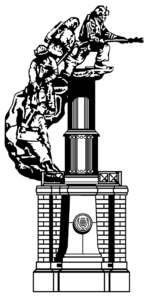 Riverside Brothers and Sisters,
Riverside Brothers and Sisters,
As firefighters we know our job is dangerous! Currently there is overwhelming evidence that our chances of developing cancer are significantly increased because of our occupation. Over the past year we have seen an increase in cancer cases here in Riverside. While we know we are all invincible, the RCPFBF would like to encourage everyone to take the time to visit your doctor and get screened.
$100 Reimbursement from RCPFBF
The Riverside County Professional Firefighters Benevolent Fund has also stepped forward to assist those making the choice to receive body scans. Our local benevolent fund is committing $10,000.00 in reimbursements to CALFIRE & Riverside County Fire Department – Professional Firefighters that complete an exam and apply for reimbursement, directly through the benevolent fund. Reimbursements are on a sliding scale ranging from $100-$50.
Download Reimbursement Form Here: Body Scan Reimbursement Form
Cancer Support Network: http://www.firefightercancersupport.org
Body Scan Options:
Company Background:
BSI Medical Director Harvey Eisenberg, M.D., FSIR, and former Professor at Harvard, UCLA and Stanford Universities originated the Full Body Scan and implemented it in our HealthView Center for Preventive Medicine in 1997, after many years of scientific research and planning. Since then, we have advanced our technology with funding from the Defense Advanced Research Projects Agency and the Health Resources and Services Administration. Following seven years in Newport Beach, and national television appearances on shows including “The Discovery Channel”, “The Today Show”, “Good Morning America”, and “The Oprah Winfrey Show”, we mobilized our technology to better serve our multiple long-term public safety organization and union contracts, which include the Los Angeles Police Department, the Association for Los Angeles Deputy Sheriffs, the Peace Officers Research Association of California, the Association of Orange County Deputy Sheriffs, the San Jose Police Department, the San Diego Police Officers Association, the Santa Barbara County Fire Fighters, the Los Angeles County Fire Fighters, the United Firefighters of Los Angeles City, the Orange County Professional Firefighters Association, the Fresno City Employees Health and Welfare Trust, and the International Brotherhood of Electrical Workers Locals 11 and 18 amongst others. We have had the privilege of providing our preventive medicine program to over 75,000 patients in California; this includes more than 20,000 members of Public Safety organizations.
The BSI HealthView Body Scan program combines thousands of dollars’ worth of medical imaging with a full physician consultation and review. We screen for the diseases of greatest concern to the public safety sector – heart/cardiovascular diseases, lower back and neck pathologies, over 20 different types of cancer, chronic lung disease, and many others. Our personalized service is designed to provide patients with a healthcare experience unlike any other they have previously encountered, which is both highly educational and motivational. It is our primary goal to provide individuals with a preventive examination that will improve the quality and length of their lives and careers. The secondary goal is to help an organization reduce long term health care expenses by identifying many potentially life-threatening pathologies as early as possible, when treatment costs are minimized, and favorable outcomes are maximized. This in turn can greatly reduce the associated costs to an agency including workers’ compensation and employee turnover.
Our proprietary technology, developed in conjunction with a federally funded program through the Office for the Advancement of Telemedicine and the Department of Defense, allows us to provide our program to patients virtually anywhere, and we are extremely proud of the trust that each of our contracted groups has placed in us to provide our state-of-the-art preventive care to their members.
BSI Body Scan Program Components:
- A thin-section, cardiac gated CT scan of the torso, which includes virtual laryngoscopy, virtual bronchoscopy, and virtual gastroscopy.
- Routine inclusion of 3-Dimensional reconstruction of the above, as well as 3-D imaging of the spine, important for physician diagnosis and patient education.
- Calcium scoring of the Coronary Arteries (aka “The Heart Scan”), Carotid Arteries, and Aorta.
- Evaluation of the lungs for cancer, emphysema, and other lung diseases.
- Screening for over 20 additional types of cancer, including renal (kidney), thyroid, stomach and lymphoma.
- Bone Mineral Density measurement using Quantitative Computerized Tomography (QCT) to assess for osteopenia/osteoporosis.
- A minimum 45-minute patient consultation/comprehensive personal scan review with a specially trained BSI Board Certified Radiologist (physician), who is a graduate of an American medical school and highly experienced in body CT imaging utilizing the above techniques. Our physician staff qualifications also include additional training in the motivational interviewing techniques of patient education, to facilitate the patients’ understanding of their BSI HealthView Body Scan program findings.
- Comprehensive 7-8 page patient report, covering each area scanned (including QCT.)
- Pre-physician consultation video education about the objectives and background of the BSI HealthView Body Scan enabling patients to fully grasp the concepts and gain the most from their experience.
BSI Body Scan Program Benefits and Concerns:
- Benefits: From the beginnings of our medical practice in 1997, we have had numerous patients and physicians report that our examination has been life-changing (and, not infrequently, life-saving.) However, up until 2006 there were not any peer-reviewed scientific studies supporting CT screening; the evidence of benefit was mainly anecdotal. In 2006, the first significant article describing the benefit of CT screening was published: The Early Lung Cancer Action Project (ELCAP), which I have also attached, found that in their long-term study of high risk patients (smokers and ex-smokers), the provision of annual CT screening was seen to increase the survivability of lung cancer from the typical 15% to over 88%. While this may seem astounding, it is quite logical, as if you can catch most diseases (in this case, lung cancer) before they spread and invade other tissues and organ systems, they can be treated locally instead of globally, which is far more effective, as well as far more cost-effective. Subsequently, the American Heart Association has embraced Coronary Artery Calcification measurements (which have always been included in the Body Scan) for patients at moderate to severe cardiac risk (which would certainly include all public safety officers), and we have many other documented cases of our Body Scan program saving lives due to the early detection of over 20 different types of cancer. That being said, the vast majority of our patients are not diagnosed with cancer, but they are shown to have early forms of cardiovascular/spinal/lung or other diseases. When these diseases are caught early, simple lifestyle modifications (diet/sleep/stress) can have beneficial long-term health effects, and we feel that one of the best ways to motivate a patient to take corrective lifestyle action is to provide them with the educational experience provided by our Body Scan Program, which combines the scan with a comprehensive scan review/physician consultation.
- Radiation: The Body Scan in essence is a preventive CT screening examination, and as such utilizes medical diagnostic radiation in the form of x-ray. Each year in the United States, there are over 80 million CT scans performed, and there has not been documented evidence of harm caused by appropriately performed CT examinations on adults. A 2012 retrospective study (attached) of nearly 11 million patients analyzed the long-term outcomes of patients having diagnostic CT scans (which typically have a much higher dosage than our screening CT) to assess risk based on long-term outcomes. As background, the unit of measurement for radiologic procedures is the MilliSievert (mSv); the researchers in this article considered an exposure of >100 mSv to be high risk, they considered 50 – 100 mSv as low risk, and <50 mSv as having no statistically significant risk. The Body Scan, depending upon the patient size, typically utilizes 10-22 mSv, well below the stated risk range. With well over 75,000 individual patients seen in California, many of whom have had repeat examinations with us over the years, we have never had any reported deleterious effects from our patients or their physicians. We also have protocols in place (both scheduling and scanning) to minimize exposures.
- False positives: One of the critiques of Body Scans over the years has been that some patients will have incidental findings that turn out to be normal variants. While some of these findings do turn out to be cancer/etc., others do turn out to be incidental. However, the fact that each patient has a full radiologic review/physician consultation as part of our program helps to greatly minimize post-scan over-zealous medical workup of these “incidentalomas.” As a side note, a benefit of the revelation of these incidental findings is that they will be documented so that future examinations (whether it is a screening CT examination or an outside diagnostic examination) revealing the same incidental findings will typically not require any additional medical workup; I personally know of quite a few patients where this has proven to be helpful.
I very much appreciate the opportunity to provide you with this information; as discussed, we are very interested in bringing a Mobile Unit to the Ben Clark Training Center. I will gladly speak further with you regarding this at your convenience.
Best regards,
Bill Penzo
Director of Patient Services
Body Scan International
Cell: (949) 394-8796
